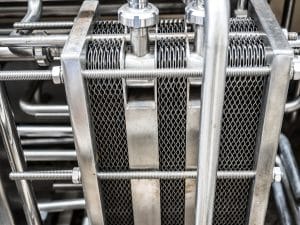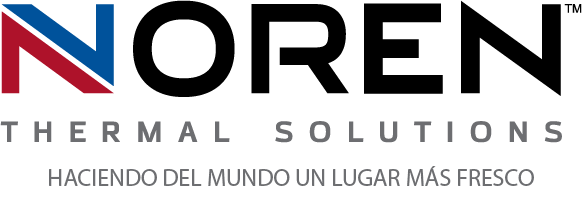 The secret behind how heat exchangers revolutionized electrical thermal management lies in their efficient, eco-friendly methods of transferring waste heat. For instance, instead of actively chilling the air inside of an electrical enclosure, a heat exchanger’s fluid can absorb the heat and transfer it safely away from components that could be damaged by it. Depending on the specific application, heat exchanger technology can be applied in several ways, such as heat spreading, conduction, natural/forced convection, or a combination of these and other techniques.
The secret behind how heat exchangers revolutionized electrical thermal management lies in their efficient, eco-friendly methods of transferring waste heat. For instance, instead of actively chilling the air inside of an electrical enclosure, a heat exchanger’s fluid can absorb the heat and transfer it safely away from components that could be damaged by it. Depending on the specific application, heat exchanger technology can be applied in several ways, such as heat spreading, conduction, natural/forced convection, or a combination of these and other techniques.
Spreading Heat
The concept behind heat spreading is to absorb waste heat and spread it across a larger surface, making it easier to consistently transfer high levels of heat. For instance, heat pipes are laced with a capillary lining material that absorbs heat evenly throughout the pipe’s inner surface, where the cooling fluid can collect and transfer it.
Conducting Heat
Conduction is the process of transferring heat through a solid material, and is often employed by plate heat exchangers. The heat is applied to one side of the plate, which absorbs it evenly, and then absorbed by cooling fluid that flows through pathways machined into each plate. The fluid is able to transfer the heat that it absorbs from the plate’s surface in a consistent and reliable fashion.
Natural/Forced Convection
Convection is one of the most efficient and natural forms of transferring heat, and involves the transfer of heat from a solid to a fluid. In natural convection, the fluid becomes less dense as it absorbs heat and naturally flows away from the heat source, being replaced by cooler fluid that flows toward the heat. In forced convection, methods such as small fans or pumps help force the flow of the fluid for higher heat transfer results.
To learn more about how heat exchangers transfer waste heat, call Noren Thermal, Inc. in Taylor, TX, at 866-936-6736.







